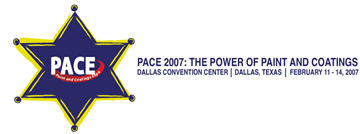Search
Individual Conference Papers
View as
Sort by
Display
per page
Improved Corrosion and Wear Resistance of a Niobium Alloyed Co-Cr-Mo Alloy
Product Number:
51315-5960-SG
ISBN:
5960 2015 CP
Publication Date:
2015
$20.00
Improved Flexibility of Bis-Phenol a Epoxy Paint by Crosslinking with Amino-Functional Siloxane Resin
Product Number:
41205-173-SG
Publication Date:
2005
$20.00
Improved Girth Welding On Seamless Linepipe For High H2S Partial Pressure Condition
Product Number:
51322-17710-SG
Publication Date:
2022
$20.00
Improved Localized Corrosion Models For Stainless Steels In Aqueous Chloride Environments With Low Levels Of Dissolved Oxygen
Product Number:
51322-17955-SG
Publication Date:
2022
$20.00
Improved Methodology To Identify The Location Of A Stuck Pig Using Large Standoff Magnetometry Technology
Product Number:
51321-16908-SG
Publication Date:
2021
$20.00
Improved Models for Life Assessment Inspections and Repair-Replace Decisions For HIGH TEMPERATURE HYDROGEN ATTACK (HTHA)
Product Number:
51319-13473-SG
Publication Date:
2019
$20.00
Improved Performance Testing for Coatings in Corrosive Service
Product Number:
41205-199-SG
Publication Date:
2005
$20.00
Improved Unit Economics, Crude Blending and Throughput Management Using a Novel High Temperature Corrosion Prediction Framework
Product Number:
MECC23-20054-SG
Publication Date:
2023
$20.00
Improvement of Blasting Productivity by Optimizing Blasting-Related Operation Parameters
Product Number:
41207-303-SG
Publication Date:
2007
$20.00
Improvement of Weather Resistance for Epoxy Based Coatings on Marine Structures
Product Number:
51216-008-SG
Publication Date:
2016
$20.00
Improvements in Direct Assessment with the Non-Contact Magnetic Gradient Tomography Method (MTM-G)
Product Number:
51324-20874-SG
Publication Date:
2024
$40.00
Improvements of Waterborne Acrylic Latex Finish Paint Properties by Incorporating Fluoroethylene Vinyl Ether (FEVE) Emulsion Technology
Product Number:
51220-261-SG
Publication Date:
2020
$20.00












